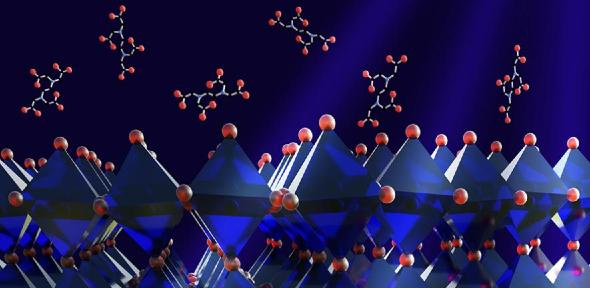
Researchers have developed a method to stabilise a promising material known as perovskite for cheap solar cells, without compromising its near-perfect performance. The researchers, from the University of Cambridge, used an organic molecule as a ‘template’ to guide perovskite films into the desired phase as they form.
Perovskite materials offer a cheaper alternative to silicon for producing optoelectronic devices such as solar cells and LEDs. There are many different perovskites, resulting from different combinations of elements, but one of the most promising to emerge in recent years is the formamidinium (FA)-based FAPbI3 crystal. The compound is thermally stable and its inherent ‘bandgap’ – the property most closely linked to the energy output of the device – is not far off ideal for photovoltaic applications.
For these reasons, it has been the focus of efforts to develop commercially available perovskite solar cells. However, the compound can exist in two slightly different phases, with one phase leading to excellent photovoltaic performance, and the other resulting in very little energy output.
A big problem with FAPbI3 is that the phase that you want is only stable at temperatures above 150 degrees Celsius. At room temperature, it transitions into another phase, which is really bad for photovoltaics”- Tiarnan Doherty, Cavendish Laboratory
Recent solutions to keep the material in its desired phase at lower temperatures have involved adding different positive and negative ions into the compound.
“That's been successful and has led to record photovoltaic devices but there are still local power losses that occur,” said Doherty, who is also affiliated with the Department of Chemical Engineering and Biotechnology. “You end up with local regions in the film that aren’t in the right phase.”
Little was known about why the additions of these ions improved stability overall, or even what the resulting perovskite structure looked like.
“There was this common consensus that when people stabilise these materials, they’re an ideal cubic structure,” said Doherty. “But what we’ve shown is that by adding all these other things, they're not cubic at all, they’re very slightly distorted. There’s a very subtle structural distortion that gives some inherent stability at room temperature.”
The distortion is so minor that it had previously gone undetected, until Doherty and colleagues used sensitive structural measurement techniques that have not been widely used on perovskite materials.
The researchers hope this fundamental study will help improve perovskite stability and performance. Their own future work will involve integrating this approach into prototype devices to explore how this technique may help them achieve the perfect perovskite photovoltaic cells.
The inerdisciplinary collaboration was carried out with the groups of Professor Paul Midgley in the Materials Science Department and Professor Clare Grey in the Yusuf Hamied Department of Chemistry at Cambridge, the Diamond Light Source and the electron Physical Science Imaging Centre (ePSIC), Imperial College London, Yonsei University, Wageningen University and Research, and the University of Leeds.
Tiarnan A. S. Doherty et al. ‘Stabilized tilted-octahedra halide perovskites inhibit local formation of performance-limiting phases.’ Science (2021). DOI: 10.1126/science.abl4890
Original University of Cambridge article.
Image credit: Tiarnan Doherty

